I know I’ve written about it last year but since I made such a big deal around lighthouses this year when they are my theme in bullet journal I couldn’t not mention the lighthouse day (7th of August).
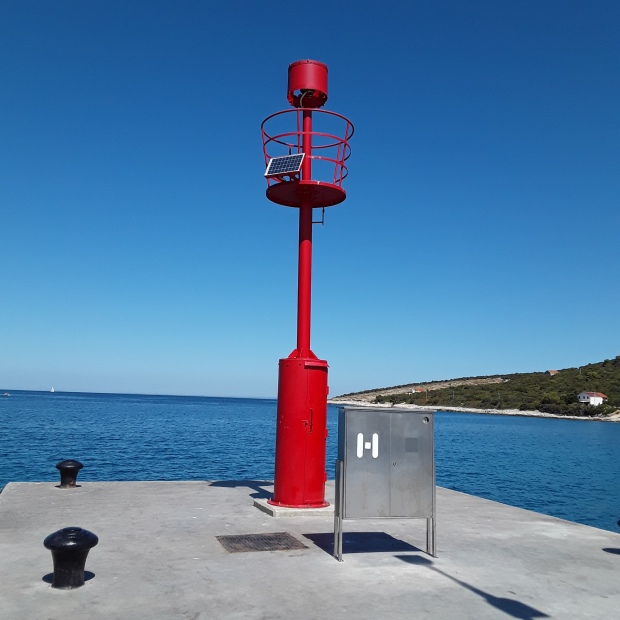
illustration, art, nature, crafts, parenting, blogger, artist, illustrator, children's books,
I know I’ve written about it last year but since I made such a big deal around lighthouses this year when they are my theme in bullet journal I couldn’t not mention the lighthouse day (7th of August).

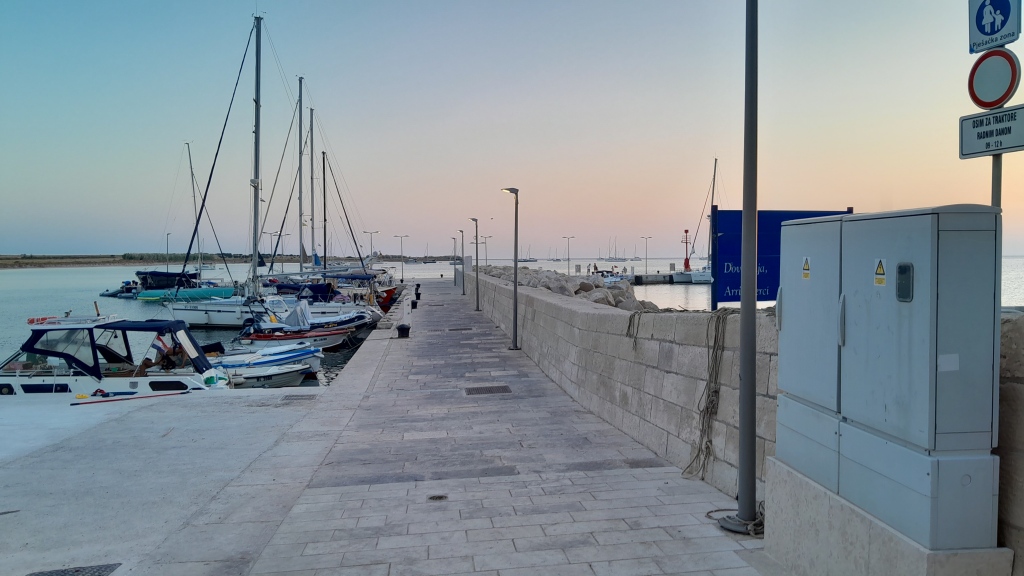
Where is your favorite memory from? Science says 80% of our best childhood memories are from outside – and I haven’t found one person for whom that wouldn’t hold true… So let’s spend the summer days outside and get our kids outside to make more happy memories:)
I know this one is a classic but it’s such a nice little activity that anyone can do – ok, maybe not vegans – but other than that almost anyone;). I love the easy little nature crafts that let kids have some hand-on connection to nature and this one even has a wow factor:) Honestly, I think I’ll do it even when my kids will move out – they are in their teens now and we all still enjoy it so… I guess some people just don’t grow up – unlike the hair on this project;).
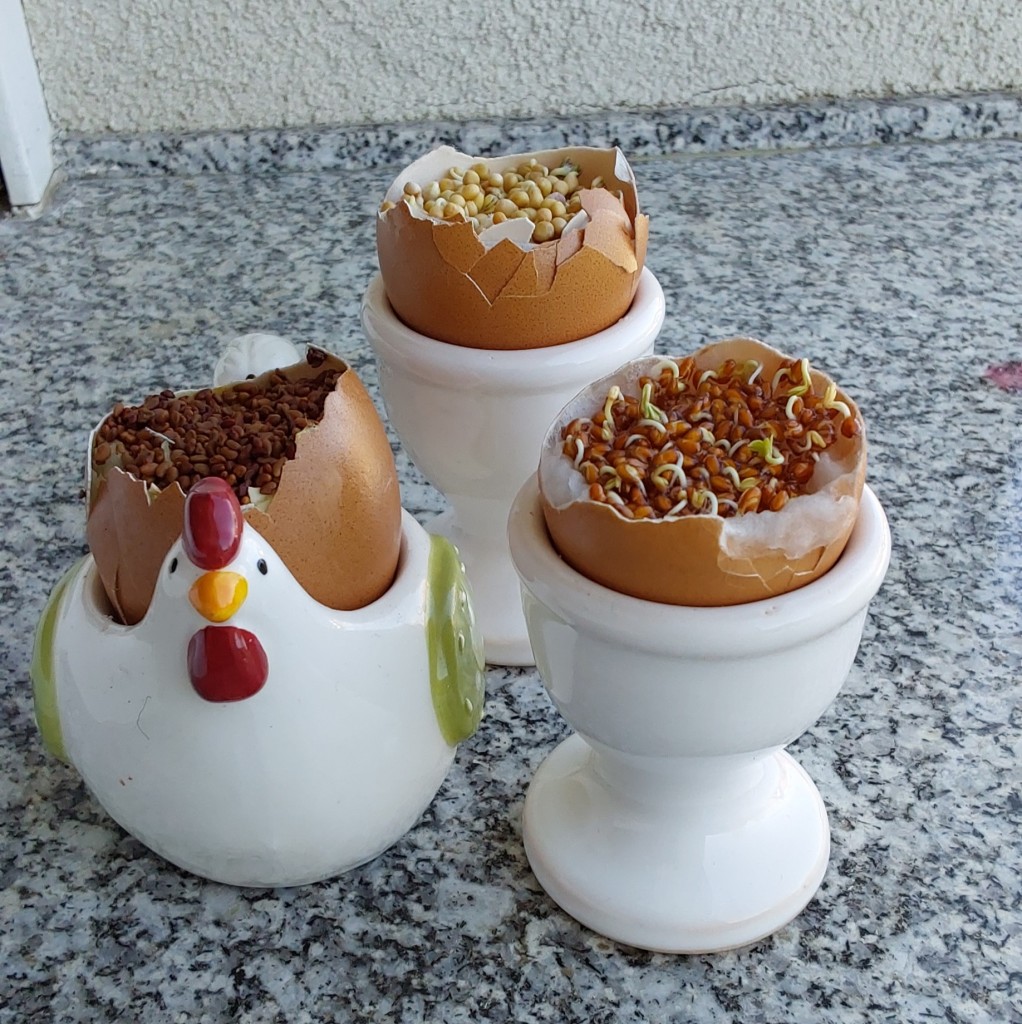
What you’ll need:
– eggs
– cotton wool or cotton pads or a peace of kitchen sponge
– seeds for sprouts
– water
Instructions – video here:).
When you make something from eggs, save the shells for this little project. You can try to make one part of the shell a bit bigger but that’s not necessary. You can wash the shells if you want but that’s not necessary either (it will give more nutrients to your seeds in fact if you leave those few drops of egg white in). Put the shells in little egg pots or egg carton so they won’t tip over and will be easy to move around.
Than, stuff the egg shells lightly with cotton wool.
Pour some water on it and sprinkle with tiny sprouting seeds like cress, mustard, radish… The best suited seeds are the ones that are selected especially to make sprouts to eat. Of course, you can make this project with any seed that fits the shell but it’s nice if they are tiny so there can be more of the little sprouts -> more hair on your egg:).
Then water the seeds a bit more (you can also use a spray bottle if there’s enough water already. Repeat that in the following days since the seeds should be wet at all times during the first few days. The first day or two you can keep them in the dark and later put them to the light.
*Bonus tip: If you want them to grow fast it helps if the temperature is higher. You can achieve that by making an improvised “hotbed” for your seedlings – I just covered mine with a lid for microwave – we rarely use microwave so it’s not a problem:).
Happy EASTER!
The other day, I got a lovely comment on my Nature Journaling Video asking about mixing the colours and especially greens – so here is the tutorial 🙂
I hope it helps someone and I wish you a lovely weekend!
The new month is quickly approaching so of course, we need a new bullet journal setup. So if you want to see how I set this up, check it here:
If bujo is not your cup of tea, you can use the layout part for designing other things and the planning side you can adapt to your system – that is if you have any – if you don’t but would like to get more organized I highly recommend you to try bullet journaling (it doesn’t have to be pretty or decorated, I just like to do it because then I prefer to use it;). It’s a very versatile system that you can adapt to your liking and make it functional for you. I’ve written about how to do that here and here.
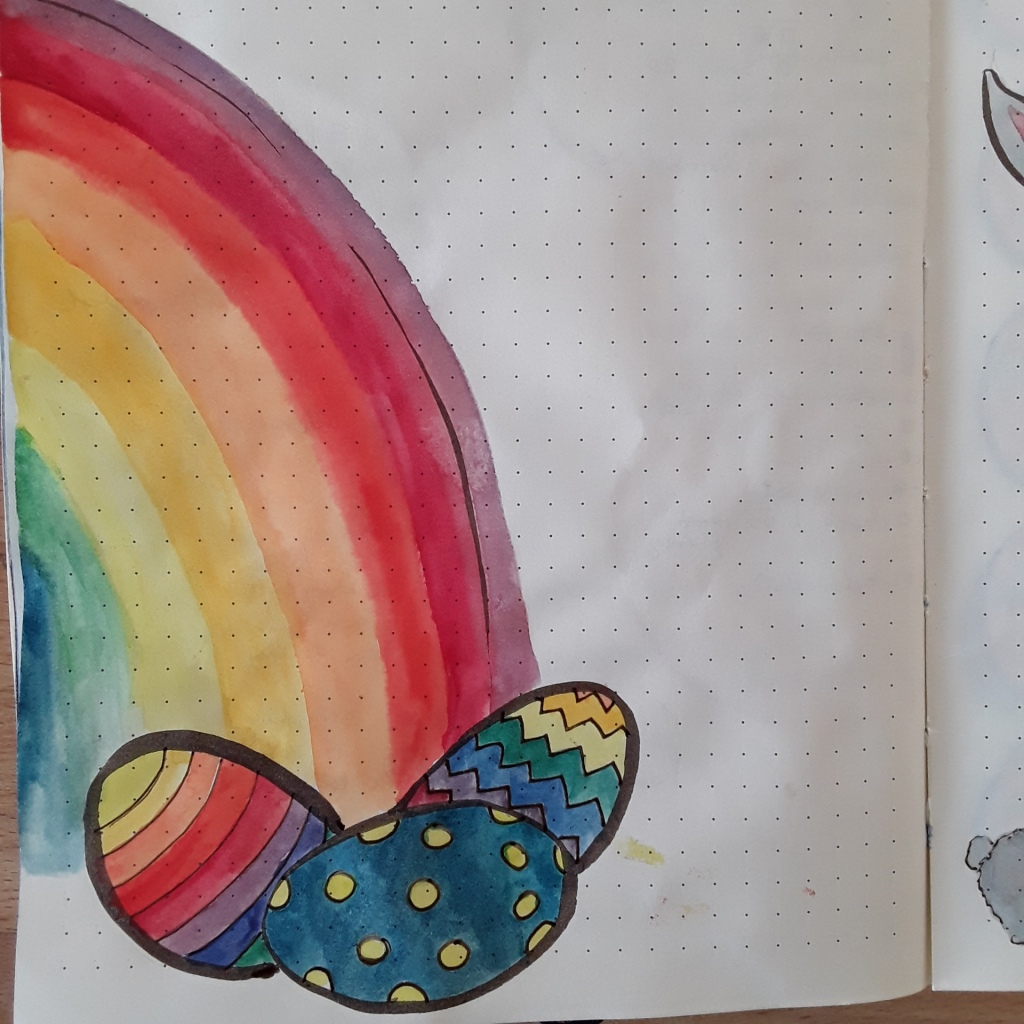
For April, I have chosen a bunny/Easter theme – for obvious reasons. As always I started by choosing a layout for each part and simultaneously deciding on how I want to incorporate the chosen theme. I quite like the ideas – carrots and eggs for the days of the week – I am not so fond of my execution in some pages, though – you be the judge;).
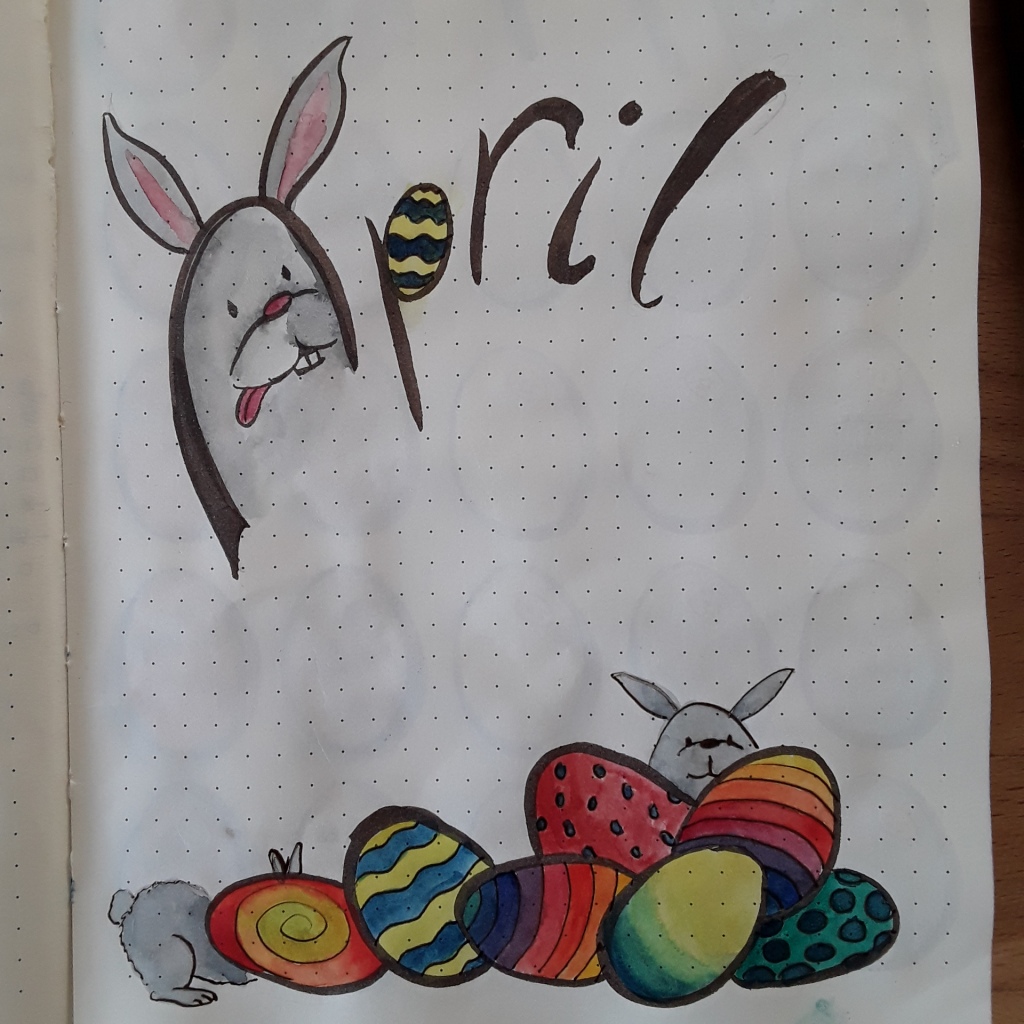
For the monthly I used eggs for each day and to keep its shape and size consistent I just made a custom stencil from a scrap piece of cardboard (from some sweets;)).
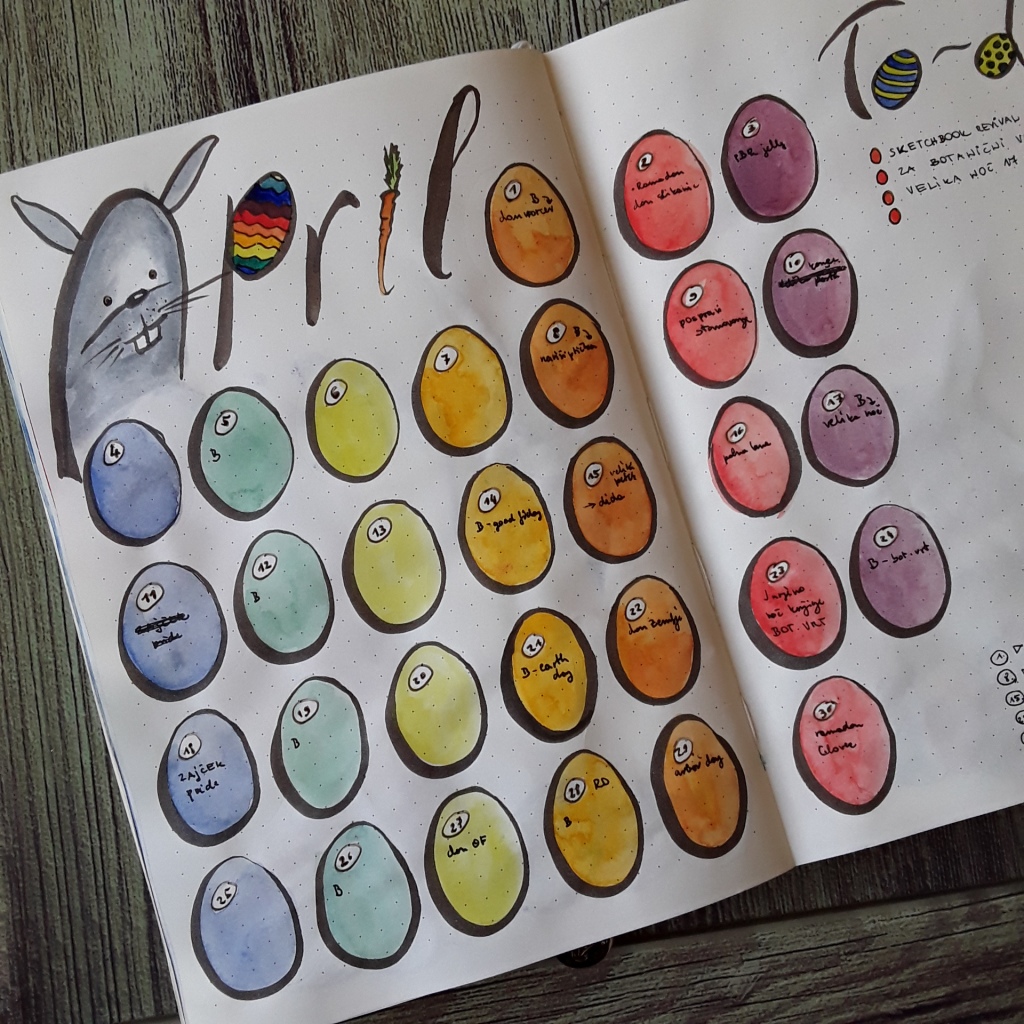
Then I have a page to plan out my 100-day-project – I have found out it’s so much easier to be consistent with it if I choose animals in advance.
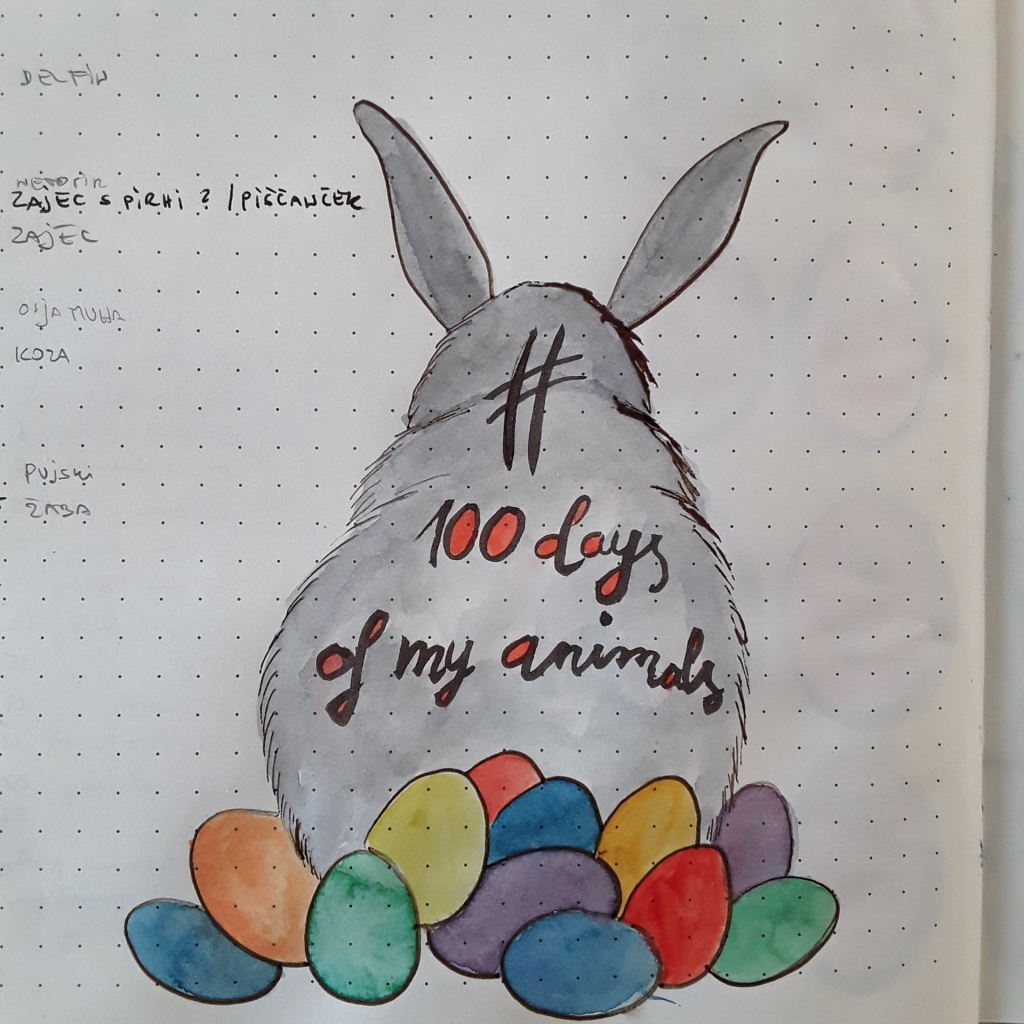
Then come the weeklies – my most used part of bujo: some I like and some I don’t but hey, it’s just one week that I have to endure any given spread;). Generally I think I made this month too bright and saturated – I went in with the markers and tried to match the design but in hindsight I would rather just use watercolours in my mixed shades;). I wanted to keep watercolour to a minimum since this paper hates them (you can see how much it buckles on the first pages…)
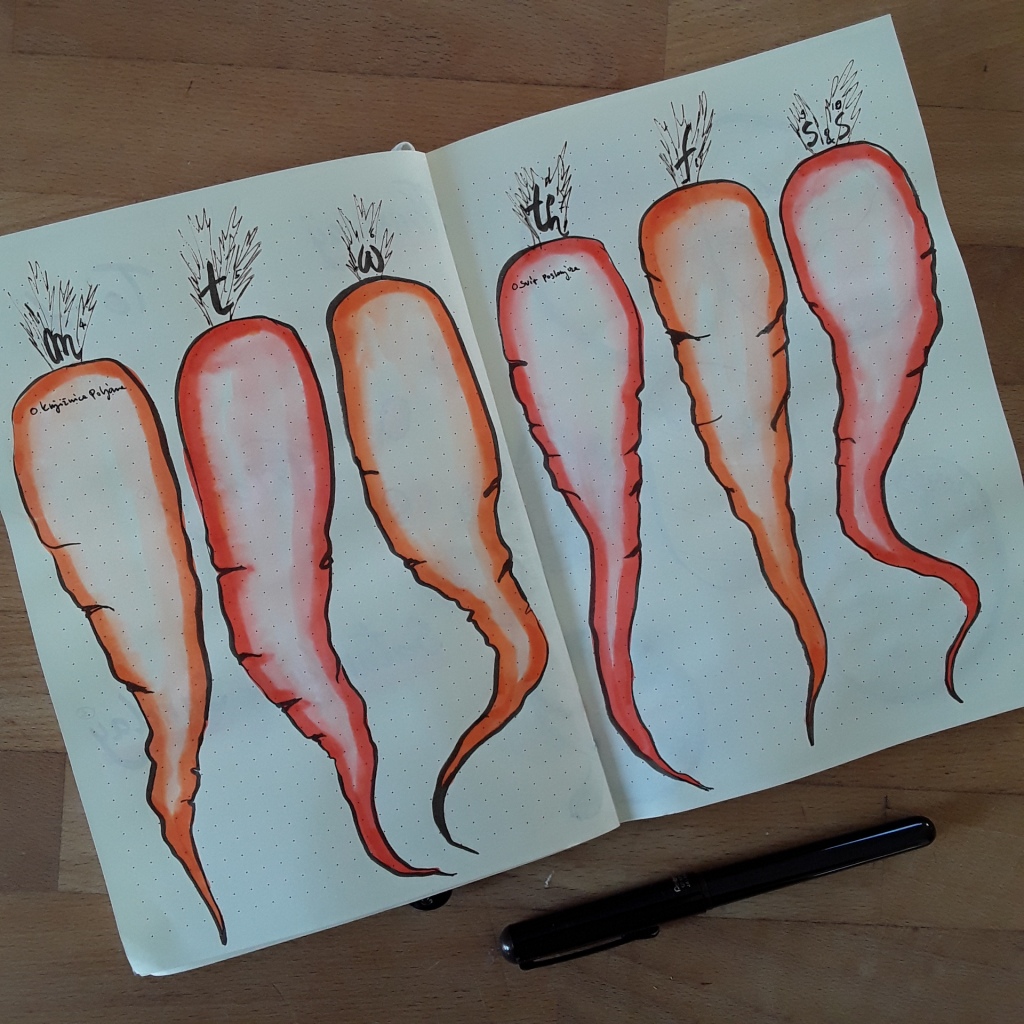
For the inking I decided on brown ink this time – because I like it, no special reason:) and so I stuck to it throughout the month. I used water based ink in the fine liner because that’s all I had but I don’t plan to go over that with watercolour so I hope it will be ok. If you are worried about bleeding, just use dry coloured pencils over it and problem solved:).
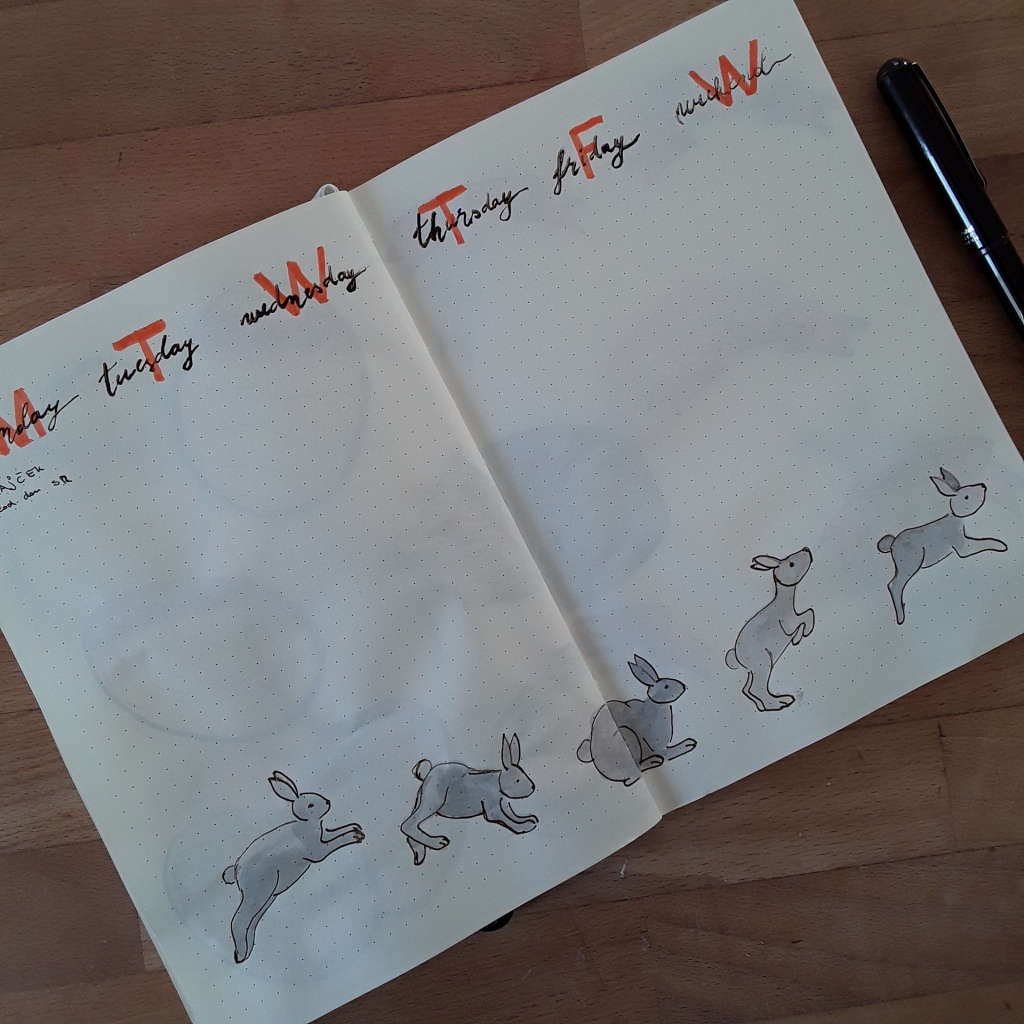
For the headers I played with brush lettering most of the time but I have tried this double header – where you write a block letter in colour underneath the script-written name of the day (I wanted to do it it with fine liner – but it refused to work so I took the most generic pen and ink – than that one refused to work and I tried another nib – it’s not pretty but it shows my “you can knock me out but I get up again” attitude :D)
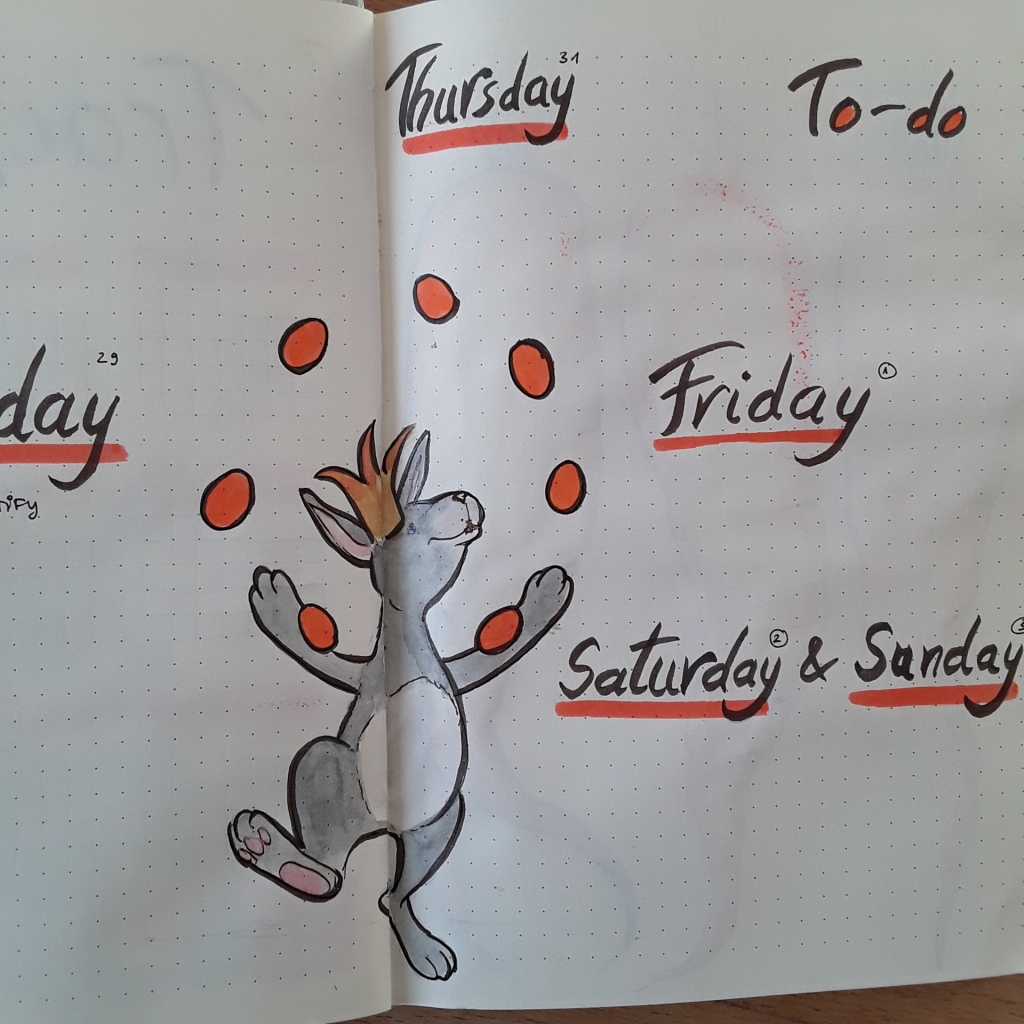
For the orange accents I used water based marker (Spectrum aqua markers) that are very juicy and bright – but the tip is really soft and can fray (at least on mine but they are old, maybe they improved that now).
If you would like to see the process, I have filmed it here.
These animals are so cute I am surprised they are not even more popular than they already are. I know that people like them but they could really be love symbols. I get it – they are pretty small and most people never see them live (they are so cute, though! If you get a chance to snorkel or dive somewhere where they live, I totally recommend that! We actually saw them with my alpha male when we dived together shortly after becoming a pair – a long long time ago, haha:)).
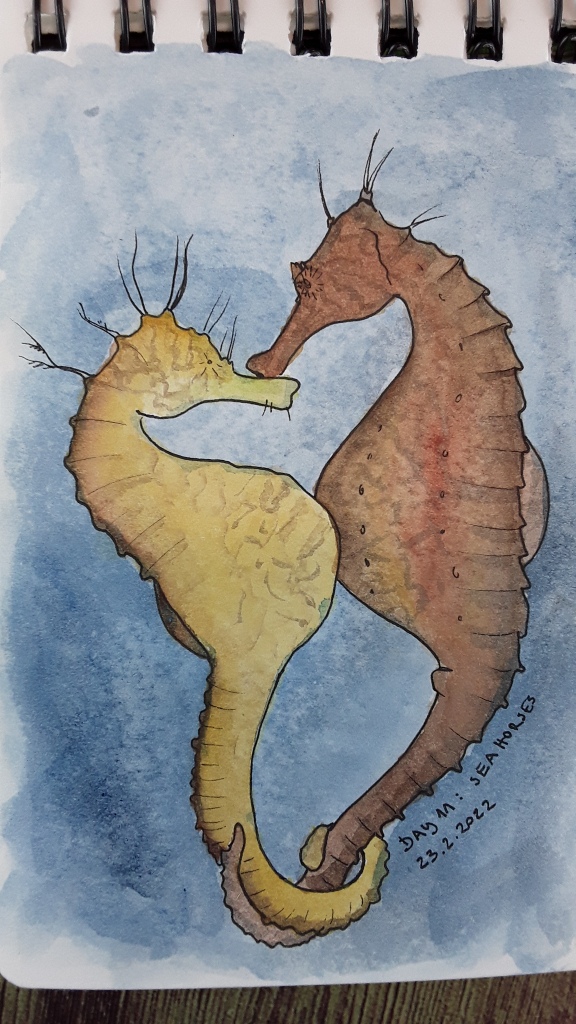
But back to the seahorse: they swim side by side and hold each other’s tail while swimming – isn’t that romantic? Then they dance for 8 hours! And the best part of it all? She deposits the eggs into HIS pouch and then HE is the one who carries them! I wouldn’t mind that, pregnancies weren’t the best time of my life to say the least – totally worth it but still – I’m glad they are over :D. So he truly is a gentleman:) Stay tuned for tomorrow because something unexpected is coming up:)
What the heck is Waitangi? It’s a place in New Zealand and now it’s also their holiday – marking the date of signing the treaty between the English crown and 540 Maori chiefs in 1840 that is considered as the founding document of New Zealand. The treaty promised Maori the same rights as British citizens, their culture would be preserved and they would be protected while colonizers would benefit by getting land more easily. It was considered fair at the time (in comparison to slavery – well, that’s a very low bar) and ironically, was the first document that gave Maori the ground to report breaches of the treaty (when they were discriminated against).
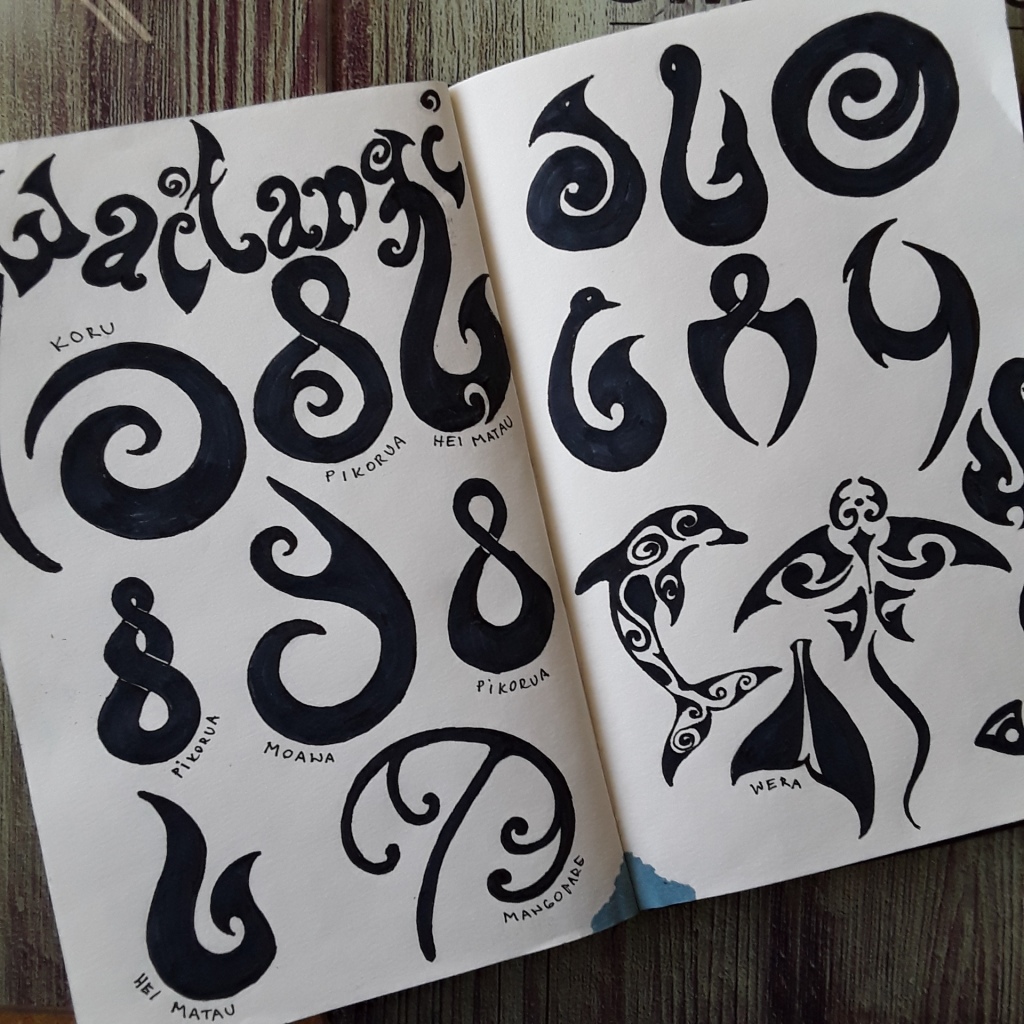
Of course, as you can imagine, history did not go as smoothly as planned so Waitangi now is the day of campaigns, debates, protests, commemorations and celebrations. It is a strange mix to a member of a small nation that has never invaded anyone and it’s hard to imagine how colonisation happened (the idea you can just go somewhere and take place of someone else) but we can all see the result… On the upside, Maori represent 17% of the NZ population and are younger on average so that % will probably rise in the future. With effort on social justice, the bridge will eventually be crossed and their culture preserved as much as possible.
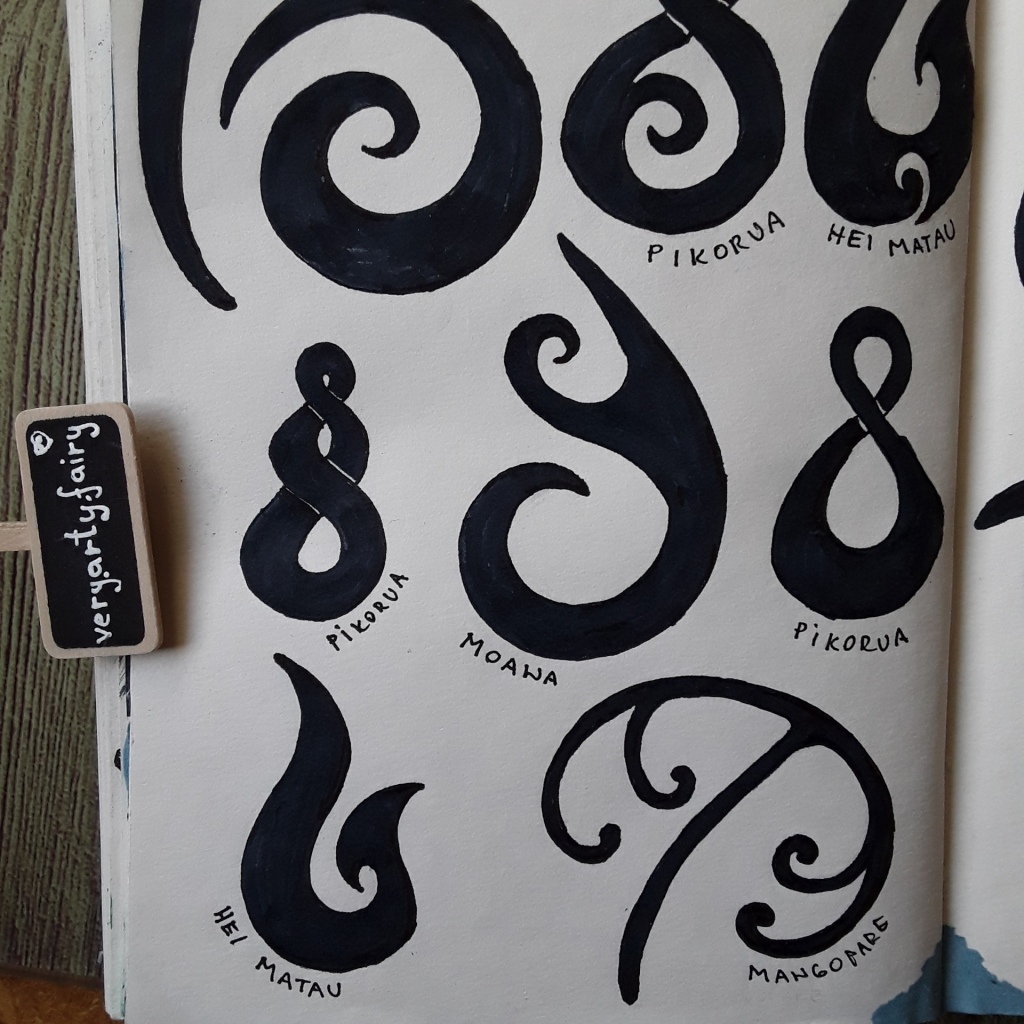
To learn and celebrate their culture through art I drew some of their symbols. I love the sea, its shapes (and everything around the sea) so these shapes are very close to my heart. My little one especially loved all the fish-themed designs and of course, the “hei matau” – the fish-hook shape.
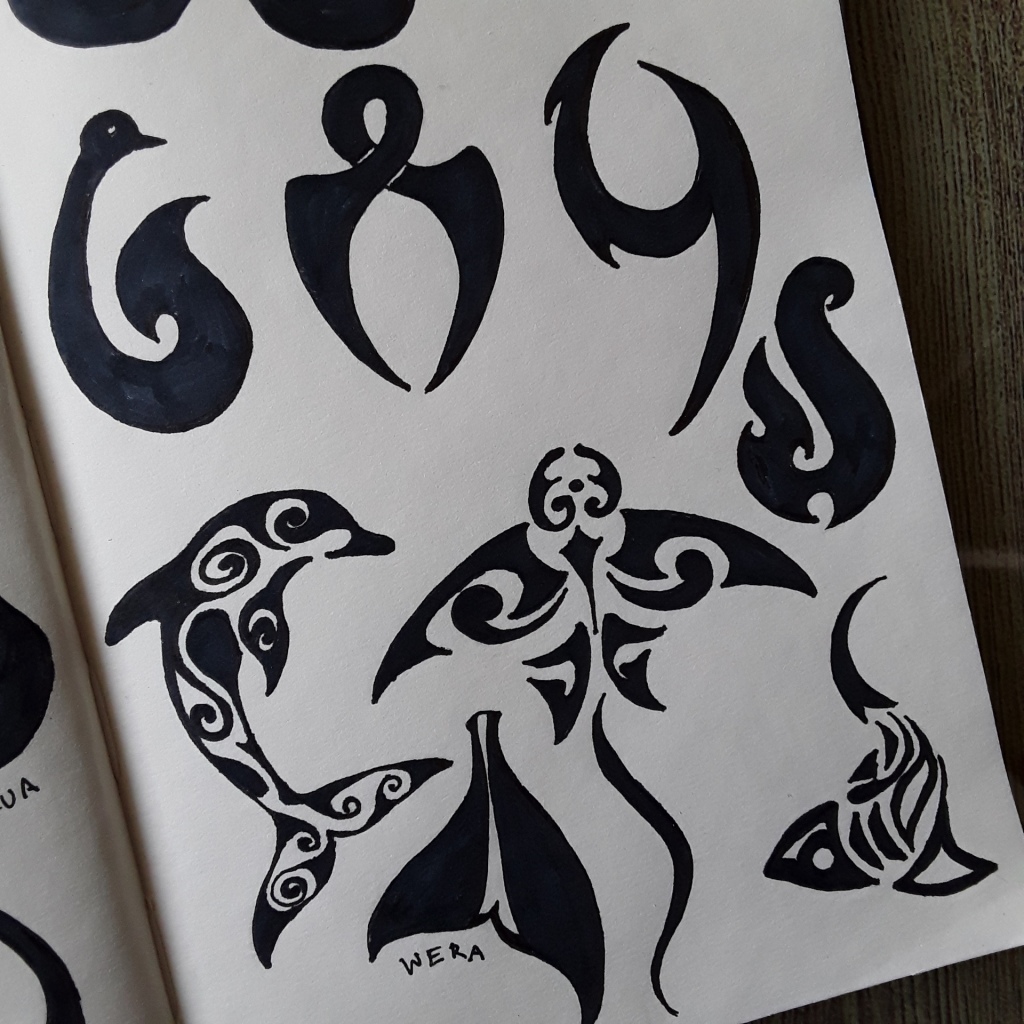
4 minutes reading time
When I got my kids and they were still babies (yes, the first two are less than 1,5 years apart so they were literally both babies:D) I wanted to find nice traditions that would make their childhood magical. We didn’t have that many traditions when I was a child since we’re not religious but we had some and I loved them – I always felt they add something magical. So I wanted to incorporate more of that into my kids’ lives.

So I asked around in a cooking forum full of kind women and got a lot of ideas about what people do and celebrate. We tried some traditions and fell in love with many of them (others happened quite unintentionally, though – like our celebration of Diwali :D).
So I didn’t know this tradition on Saint Barbara’s day until I was a grownup but we like it and we do it every year. I didn’t know that much about saints and St. Barbara was no exception – I knew what I learned in art history class in high school – but that was a long time ago and we didn’t learn about the ways people celebrate it… So in case you are in the same boat, here’s another nice tradition.
What is it about?
It is the tradition on the 4th of December (St. Barbara’s day) in the German-speaking countries, to cut branches of fruit (usually cherry) trees and place them into a vase with water. They are then kept in a warm place so that they bloom (hopefully by Christmas) and they are called Barbara’s branches (Barbarazweig). I am sure this tradition has some pagan roots with its very nature-based ritual.
Therefore, every year on the 4th of December elves bring us 3 copper coins and a little packet of sugar. At first, they left notes but now kids already know what to do with it. They place everything in the vase – copper slows down the growth of bacteria so that branches don’t get rotten and the water doesn’t stink (you still need to change it every so often) and the sugar is to give the branches energy to bloom. According to florists, this should help.

To be perfectly honest we rarely get the branches to bloom. Sometimes we succeded but never to a full bloom that everybody would admire. But we still do it. And it’s still fun. I don’t know why – maybe because it’s not about the end result after all;).
So to make the branches look nice even if they never get to bloom, we can decorate them with bubbles, elves or even mini art journals;).
8-10 minutes read – grab a cuppa and join me for some gift giving:)
Another classic of almost any celebration is a gift. Everywhere around the globe people find reasons to bear gifts (with a little help of magical friends sometimes;)). The only holiday where gifts are not part of the culture that I have found is Vesak – but Buddhists really are a different kind of people (that I hold in high regard – it was meant positively – so even their celebrations are genteel and non-materialistic – I have never seen or heard of a holiday like that: no feast of food, no gifts, no drinking, no wild dancing; but I’ll blog on that in May, if you stick around;). All other major holidays, however, include some kind of gift-giving. But what do people give each other at this winter opportunity?

When I was researching customs of winter gift-giving from across the world for this series I was amazed at how different the traditions are – some were very close to my heart – like the Finnish tradition of giving books for Christmas and others were very foreign to me – like giving money in a red envelope like in China for Chinese new years; they traditionally don’t give gifts on Christmas but a new habit has emerged among the younger generation – they give each other decorated/beautifully wrapped apples – the tradition probably has something to do with the fact that Chinese name for apple is similar to the one for Christmas Eve and the fruit also symbolises good fortune and peace. It could also derive from their tradition of exchanging mandarines on New Year’s.

In Japan, more than the gift itself, the presentation – the wrapping is important. Their culture of minimalism and esthetics calls for attention to detail and unusual wrapping techniques (without the cello-tape or wrapping in fabrics that is a form of art). They look incredible and I hope to do it once my kids grow up a bit (they still choose to believe in Grandpa Frost so I can’t use my fabrics :D). Similarly important but a very different style of wrapping is found in Egypt, where presents are wrapped twice – first in ordinary paper and then in shiny bright coloured paper.

In the majority of Africa, Christmas is only a religious holiday and gifts are not exchanged (but they sometimes have other holidays with gifts). However, some countries follow the gift-giving tradition: Nigeria, Madagascar, South Africa, Ghana, Zimbabwe and Kenya, while Zambians bring gifts to Church for the poor or sick members of the community.
The necessary traditional gift in the UK is a cracker – a small gift in a decorated tube that cracks when pulled apart. It is filled with confetti and contains a small gift and a joke. I have never seen it in person but really like the idea (not the sweeping of the confetti, though – probably that’s why we haven’t tried it yet:D).

The Danish and Polish traditionally give presents to their animals – usually a treat… That is actually very much a custom where I live, as well – our “good man” (we have 3, you will meet them all;) give gifts to all members of the family and pets are usually included – again often that is a delicious treat but it could also be a toy, a blanket…

Some countries, like Norway and Canada, have the habit of giving fir trees – one city to another, sometimes even from one country to another (Oslo gives fir to London). That also happens in other parts of Europe and in some cities in the USA.
Even further north, Inuits usually give sleighs or mittens – very practical gifts given the cold temperatures they live in.

In Scotland, the tradition of Hogmanay requires the first person over the threshold of a home to bring whisky, a black bun (fruit cake) and shortbread. In our country, people usually give each other wine and cookies, so very similar to Scotland (which is not a surprise as both cultures are known for their drinking). As for kids they usually get toys and something to wear.

It is our family tradition that Grandpa Frost brings at least one book for each member of the family (we all love books). And since the third of December is “the day of culture” here, our elves usually give us tickets for the museum in our advent calendar:). Today we went to the national museum and nature museum (they are in the same building:). I’ll post about this kind of “filling our art wells” next year:).
What do you like to give or get during this time? What gift is customary where you live?
7 minutes read – go grab a coffee or tea and enjoy
What it is
It’s a ring-shaped evergreen decoration – or to put it plainly “a circle made from winter greenery” – usually spruce or fir and holly, but other kinds of greenery like cypress or olive branches could be used. In Europe, especially in German-speaking countries it is a symbol of faith and is traditionally made on Saturday, 4 weeks before Christmas so that it is placed on the table on Sunday. It is traditionally decorated with a red ribbon and 4 red candles – the first one is lit on the first advent Sunday (4 weeks before Christmas) and then each week a new candle is lit.
Modern versions digress from the form and use other colours, sometimes omitting the candles altogether and adding different kinds of decorations like Christmas balls and bubbles, small elves, tiny gifts etc…

Where this tradition comes from
The origins of our modern wreaths come from antiquity. Laural wreaths from ancient Greece and Rome are famous and still symbolize victory today in many parts of the world. But it is less known that ancient Greeks and Romans made wreaths from fresh tree leaves, twigs and small fruits and flowers to hang on the door as a symbol of victory. Similarly, they also wore the wreaths, called “coronas” as headdresses that represented the wearer’s occupation, status and rank. At New Year’s Romans also gave branches of evergreen as a symbol of health and vigour – later the branches became round wreaths.

The circle still represents unity, perfection and wholeness but in pagan times the circular shape was heavily associated with the warm, enduring sun – so no wonder the tradition of wreaths around solstice emerged – when we miss the sun the most!
In Christianity, however, the pine needles and pointy holy leaves represent Jesus’s crown and red berries drops of blood. *I must admit, the sun analogy is a bit closer to my heart, a bit lighter;) but it is always interesting to learn the symbols of different faiths and rituals. However, I love admiring the modern versions as well – like this one with gnomes/elves (this one is from a contest of wreaths a few years ago)

How to make one
I have always admired the beautifully crafted wreaths and thought it must be very complicated to make them (how the heck do they persuade the branches to hold together?) But it is surprisingly easy to craft one – even for beginners! I have learned how to make them at the florist shop where I worked as a student – so here are the tips from the pros, hihi:). There are several ways to go about it but these two are most common:
To hold the branches together a strong thread is usually wind perpendicular to the wreath (around it). To adhere candles it is easiest to stick 2 or 3 pieces of wire in them (hold one end of the wire above the flame so it’s hot before sticking them into the candle) and then twist the wire into the wreath. The ribbon is just wrapped around and the ends tucked between the greenery to conceal it (you can glue ends in place) and the decorations could be either hot-glued on or attached by a wire.

*Adapting it for non-Catholics
Use it as a decoration on the door or on the table – it is customary where I live and many non-religious households still have one.
Light the candles depending on your celebration or omit the candles and just enjoy the greenery. When I used to work in a florist shop a lady once came and ordered one for her dead husband’s grave… I admit I didn’t know how to go about it. I was afraid I’d offend her since she “didn’t want it kitchy but also not in black”… But it turned out she wanted a normal Christmas wreath – she wanted to still enjoy Christmas with him – and the closest that was was a memory of him… I think there is no good deity who would not like that:).